- Register
- Log in to Tune-In
- Wishlist (0)
-
Shopping cart
(0)
You have no items in your shopping cart.
Beatles News

Billy Sheehan is widely considered one of the premiere rock bassists, with a resume that includes being an original member of Mr. Big, The Winery Dogs, and David Lee Roth’s solo band.
Lindsay Ell Talks Being Shania Twain's Lead Guitar Player & 'Love Myself'
As talented a bassist as Sheehan is, for him, no one in the rock world surpasses Paul McCartney. Billy shared his respect for the iconic Beatle during a recent interview on The Mistress Carrie Podcast.
During their conversation, host Mistress Carrie asked Sheehan if he could name a song with what he’d consider the best bass line.
Sheehan’s initial response was the 1966 Yardbirds song “Lost Woman,” which featured Paul Samwell-Smith on bass. He then moved on to pour praise on McCartney’s playing.
“Almost anything McCartney did is just brilliant,” he declared. “Some people don’t get it. I think if [you] give me enough time, I’ll get them to get it.”
Sheehan continued, “I would be happy to explain to anyone why Paul McCartney is probably the greatest … really, just a really great, great player.”
The 71-year-old musician then drew details

If you asked fans of either band, they could probably tell you a few key differences between the Beatles and the Rolling Stones. Though they are somewhat cut from the same cloth–both having blues inspirations and being apart of the “British Invasion”–they stand in contrast as well.
According to Keith Richards, there is one main difference that set the two bands apart. Find out what that is, below.
Well, I never kept a dollar past sunset
It always burned a hole in my pants
Never made a school mama happy
Never blew a second chance, oh no
I need a love to keep me happy
I need a love to keep me happy
Baby, baby, keep me happy
Baby, baby, keep me happy
Before digging deep enough to get into conversations about sound and attitude, the Stones and the Beatles have apparent differences that you can see at first glance. According to Richards, he marveled at the fact the Beatles had four unique singers while the Stones only had one, Mick Jagger. It’s something even Paul McCartney has marveled at in the past, despite having lived it first hand.
“I remember Keith Richards saying to me, ‘You had four singers. We only had one,&rsquo details

During the age of Beatlemania, the personal lives of the Fab Four were under constant scrutiny, and countless girls dreamed of being married to Paul McCartney. To the disappointment of many, McCartney was engaged to actress Jane Asher at the height of the Beatles’ fame in the ’60s, and he went on to be married three times, and famously had an enduring musical partnership with his first wife, photographer turned Wings cofounder Linda McCartney.
After his wife Linda’s untimely death, Paul married his second wife, Heather Mills, but the marriage didn’t last very long, and was plagued by tabloid scandal. Currently, McCartney is happily married to Nancy Shevell. Read on to take a deep dive into the musical icon’s marriages and learn which songs he wrote about the women in his life.
In 1959, Paul McCartney began dating Dot Rhone, a local Liverpool girl. They briefly became engaged when she unexpectedly got pregnant in 1960, but called it off after she had a miscarriage and were officially broken up by 1962. McCartney also admitted to having several affairs during the Beatles’ early days in Hamburg, Germany, while he was engaged to Rhone.
Source: Abbey Bender/yahoo.com
details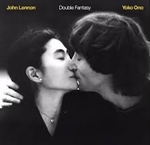
John Lennon and Yoko Ono’s fifth studio album, Double Fantasy, hit #1 on the Billboard 200 and went on to spend eight weeks in the top spot.
The album was released in November and initially didn’t perform well, but after Lennon’s Dec. 8 death the album became a commercial success. It was eventually certified triple Platinum by the RIAA.
Double Fantasy, recorded at the Hit Factory in New York City, featured such songs as “(Just Like) Starting Over,” which hit #1 three weeks after Lennon’s death; “Woman,” which peaked at #2; and “Watching The Wheels,” which peaked at #10.
The album went on to win Album of the Year at the 1991 Grammy Awards.
Source: Jill Lances/1430wcmy.com
details

In 1967 The Beatles were at the peak of their powers. The band had released the masterpiece 'Sgt Pepper's Lonely Hearts Club Band' that May, revolutionising popular music and topping the UK charts for 23 consecutive weeks.
The ground-breaking album was the soundtrack to the so-called 'Summer of Love', capturing the psychedelic zeitgeist. The band's next move continued with the experimental sound they had been developing since 1966's 'Revolver' and became 'Magical Mystery Tour', which was released as a double EP in December 1967.
Its initial US release included the classic tracks 'Hello, Goodbye', 'Strawberry Fields Forever', 'Penny Lane' and 'All You Need Is Love' and the album was loved by fans while garnering critical acclaim. However, the film of the same name it served as the soundtrack for was considerably less adored.
The 'Magical Mystery Tour' film aired on BBC1 in black and white on Boxing Day 1967. It was the third Beatles film, following 'A Hard Day's Night' and 'Help', which were released in 1964 and 1965 respectively.
Much of 'Magical Mystery Tour' was improvised and its story follows a group of people on a coach trip who then start to experience strange and surreal things. About its details

While many of us most commonly associate December 26 with Boxing Day or the start of Kwanzaa, for Fab Four Fans, the day after Christmas also marks the anniversary of Paul McCartney’s painful mishap that led to his iconic mid-1960s Beatles style.
Indeed, one of the oft-forgotten perks of being one of the biggest rock stars of the time is that when you suffer a blunder that alters your physical appearance, you can start a whole trend around it. Paul McCartney’s Blunder Led To Beatles’ Iconic Style.
On December 26, 1965, Paul McCartney was visiting his family over the winter holidays when his friend, Tara Browne, paid him a visit. The Beatle, at the height of his fame and enjoying the trappings of the well-to-do rock star life, had a couple of mopeds at his disposal, so he thought he and Browne could take a joy ride together. While the friends rode to McCartney’s cousin’s house, the pair admired the scenery, including the night’s full moon.
“It was an incredible full moon. It was really huge,” McCartney later recalled in Anthology. “I said something about the moon, and [Tara] said, ‘Yeah,’ and I suddenly had a freeze-frame image of mys details

John was not a fan of some of Paul's later work with The Beatles.
As the 1960s drew to an end, artistic differences within The Beatles began to take their toll. John Lennon and Paul McCartney were the primary creative force behind the band's monumental success, with the vast majority of songs written together and jointly credited as Lennon-McCartney.
The two were able to draw the best out of each other as songwriters - with their contrasting approaches often meeting in the middle to create greatness. About their partnership, Music and Musicians magazine's Wilfred Mellors wrote in 1972: "Opposite poles generate electricity: between John and Paul the sparks flew. John's fiery iconoclasm was tempered by Paul's lyrical grace, while Paul's wide-eyed charm was toughened by John's resilience."
But as time went on, they seemingly wanted to do very different things and had increasingly dissimilar views of what their songs should be like. So much so that, as the ECHO has recently looked at, John treated much of Paul's later Beatles work with disdain. He disliked the album 'Sgt Pepper's Lonely Hearts Club Band', which was Paul's brainchild, and he was very disparaging about the song 'Let it Be'.
This was a details

Very rarely does a member of The Beatles look back in retrospect and say “I wish.” However, rarely doesn’t mean never. That being so, Paul McCartney, one of the greatest songwriters of all time, has actually voiced his humility and acknowledged what songs simply dumbfound him as a writer. Matter of fact, he’s gone so far as to say that he wished he had written numerous songs.
Well, for the musicians in question, McCartney’s envy has to be better than any awards or accolades they’ve ever won. The two musicians in question are Ray Davies of The Kinks and Sting. Frankly, for these Brits, this is seemingly a higher honor than being knighted by the Royal Family. Nevertheless, the two songs of theirs McCartney wishes he had written were Davies’ “See My Friends” and Sting’s “Fields of Gold.”
The Kinks and The Beatles came from the same era, taste, and country. Thus, the two certainly had some musical and cultural parallels in their earlier years. That being so, when The Kinks released “See My Friends” in 1965, McCartney was completely taken aback and jealous by the sound they achieved. Particularly, the trailblazing creation of raga roc details
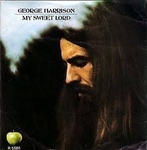
The drummer shared the heart-warming message with his followers
Ringo Starr has sent an uplifting message to fans today wishing them a Merry Christmas
Ringo Starr has sent an uplifting message to fans today wishing them a Merry Christmas. The Beatles' drummer uploaded a picture of himself to Instagram wearing a Santa hat and holding the peace sign up.
The 84-year-old said: “Peace and love from London. I wanted to wish everybody a happy merry Christmas. I hope you all have a wonderful time. Love, love, peace and love and don’t forget. Happy new year peace of love.”
The festive message was reciprocated by fans who returned well wishes and cheer. One fan responded “Merry Christmas Sir Ringo! Sending lots of peace and love!!”
Another fan added: “Merry Christmas dear Ringo, God bless you and your family”, while further responses included: “Merry Christmas Ringo I love you” and “Peace and love, Merry Christmas Legend!”
Ringo wasn’t the only member of the Fab Four to wish fans a Merry Christmas. Sir Paul McCartney shared a message earlier on, he said: “Happy Christmas all around the world and have a heck o details
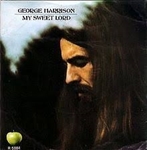
George Harrison landed at #1 with the song “My Sweet Lord,” which went on to spend four weeks in the top spot.
The chart-topper, produced by Harrison and Phil Spector, made Harrison the first former member of The Beatles to score a solo #1 in the U.S. The track, which was released as a double A-side single with “Isn’t It a Pity,” also went to #1 in several other countries, including the U.K. and Australia.
“My Sweet Lord” was featured on Harrison’s album All Things Must Pass, which was his first solo album following the Beatles’ breakup. He later released an updated version of the tune, “My Sweet Lord (2000),” for the 30th anniversary reissue of the album.
Source: deltaplexnews.com
details
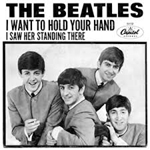
After releasing several singles in the U.S. earlier in the year—”Please Please Me” and “From Me to You” (under Vee-Jay Records) and “She Loves You” (Swan Records)—Capitol finally signed the Beatles after Ed Sullivan agreed to let the band perform on his show in February 1964. The day after Christmas, 1963, the Beatles released their first single under the label, and what would become their first No. 1 in the United States, “I Want To Hold Your Hand,” and its B-side “I Saw Her Standing There.”
By early 1964, “I Want to Hold Your Hand” went to No. 1 internationally, including in the UK and the U.S., making them an overnight sensation in America. When they heard they had topped the chart in the U.S., the Beatles were in Paris playing a three-week, 18-show residency at the Olympia Theatre before heading to the U.S.
“We were playing in Paris, an engagement at the Olympia Theatre, a famous old theater Edith Piaf played at, and we got a telegram — as you did in those days — saying, ‘Congratulations, No. 1 in U.S. charts,” recalled Paul McCartney. “We jumped on each other’s backs. It was late at details

The formal separation of the Beatles is 50 years old this Sunday, a painful moment preceded by "many tensions" due to personal differences, creative conflicts, and the death in 1967 of their manager.
Although they initialed their dissolution in a document on December 29, 1974, John Lennon, Paul McCartney, George Harrison, and Ringo Starr had stopped working together between 1969 and 1970.
"They discovered that they were individualities and not just members of the band," Peter Doggett, author of the book "You Never Give Me Your Money: The Battle for the Soul of The Beatles," published in 2009 and focusing on the band's breakup, tells AFP.
That document, known as "The Beatles Agreement," has the date December 29, 1974, handwritten on it, with the signatures of the four band members. It allowed the quartet to structure their rights to song ownership and legal matters related to the breakup.
"The legal separation in December 1974 included an agreement whereby, under the terms of the original partnership, all of that money was divided equally among the four of them," adds Doggett.
Source: aldianews.com

Former Journey frontman Steve Perry recently signed a new record deal with Dark Horse Records, the label founded by late Beatles guitarist George Harrison. Perry’s first release on Dark Horse was The Season 3, an expanded version of his 2021 holiday album The Season.
Perry recently was interviewed about The Season 3 on an episode of “Dark Horse Radio,” a Harrison-themed radio show that airs on SiriusXM’s The Beatles Channel. During his appearance, Steve also discussed some of his favorite Harrison songs and recordings, both with The Beatles and as a solo artist.
Among the tunes Perry singles out were the Beatles songs “I Need You” and “Here Comes the Sun,” and the Harrison solo tune “Beware of Darkness.”
About “I Need You” and Perry’s Own Version of the Song
Perry began with “I Need You,” a 1965 Beatles song from the Help soundtrack that was written and sung by Harrison. Steve covered the tune on his 2018 solo album, Traces. For his version, Perry put a mellow, R&B-flavored spin on the tune.
Source: Matt Friedlander/americansongwriter.com
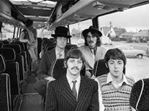
"Rubbish", "boring" and "appalling": just three of the word used to describe the Fab Four's self-produced TV movie, which aired on Boxing Day 1967. But why did the film get that sort of reaction?
The Daily Mirror called it "rubbish". The Daily Express said it was "boring". The Daily Mail's TV critic said it was "appalling". This was The Beatles' Magical Mystery Tour - a one-hour film made for television that went out on Boxing Day 1967, a mere six moths after the Fab Four had stunned the world with their masterful album Sgt Pepper's Lonely Hearts Club Band.
These days, Paul McCartney, who was the main driving force behind the production, claims it was a huge influence on film students and the whole "road movie" genre. At the time, Magical Mystery Tour - which was released in the immediate aftermath of the death of Beatles manager Brian Epstein - was a new experience for the group. It was a rare misfire.
The Beatles in costume for for the I Am The Walrus segment of Magical Mystery Tour. Paul is the hippo, George is the rabbit, Ringo is the parrot and John, of course, is the walrus.
The Beatles in costume for for the I Am The Walrus segment of Magical Mystery Tour. Paul is the hippo, George is the rabbit
details
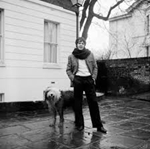
John Lennon, Paul McCartney, George Harrison, and Ringo Starr of the Beatles started out in Liverpool, England, but it wasn’t long before the band took the entire world by storm. As the group ascended to superstardom, the famed foursome expanded their horizons and put down roots around the UK and beyond.
The group’s 1964 song “I’ll Follow the Sun” is “a ‘Leaving of Liverpool’ song,” McCartney explained in his 2021 book The Lyrics. “I’m leaving this rainy northern town for someplace where more is happening.” The Beatles’ rise to fame is explored in the new documentary Beatles ’64 (streaming now on Disney+), featuring never-before-seen footage of the group and its legions of fans during the frenzy of Beatlemania. Of course, it wasn’t all massive crowds and wild concerts; the four led quieter lives in their time at home, where they wrote some of their greatest hits. To provide a peek behind the curtain into their private worlds, we rounded up some domestic snapshots of the iconic musicians below.
Source: Michael Gioia/architecturaldigest.com
